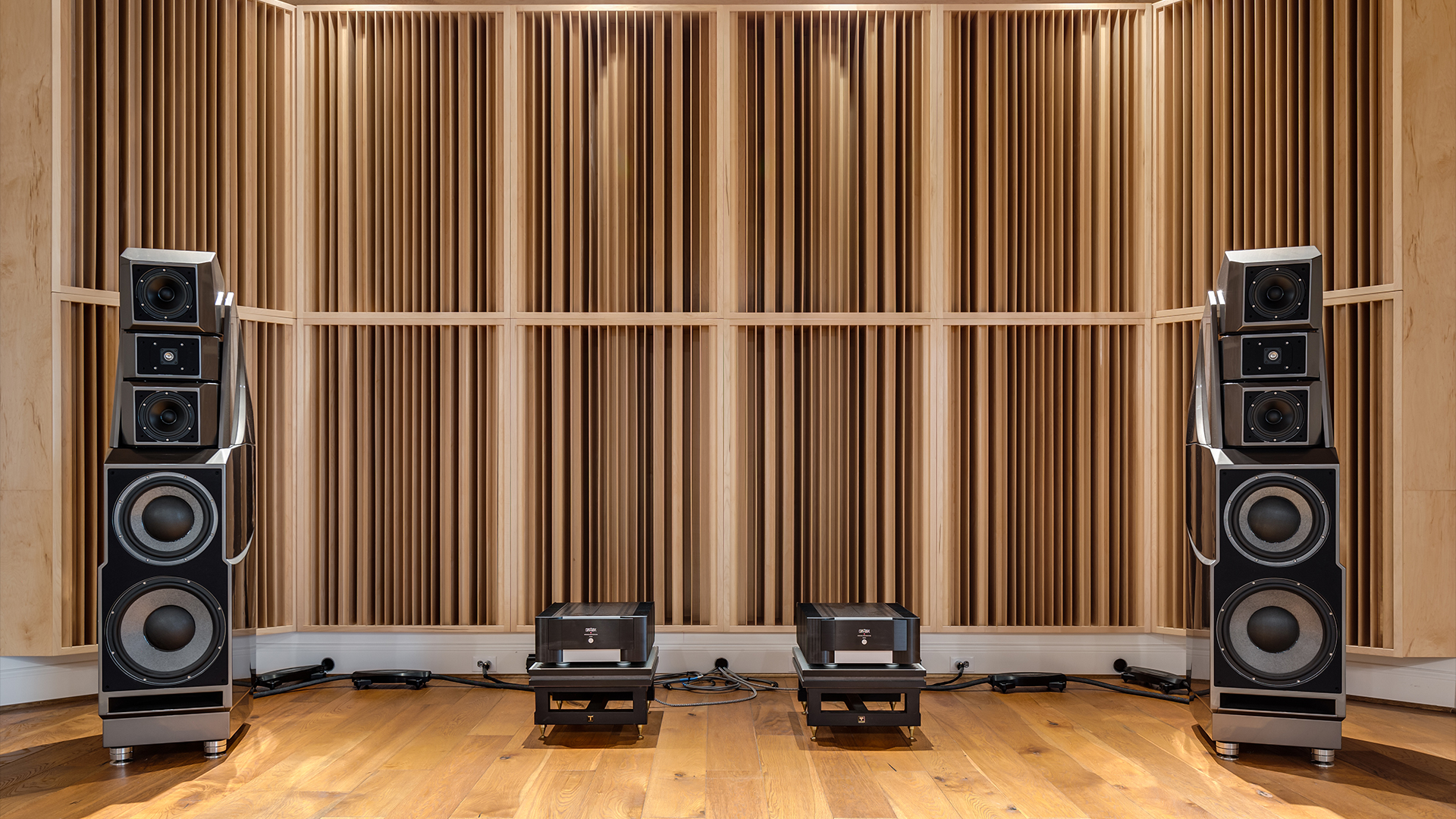Quadratic Sound Diffusion
Quadratic diffusers are composed of a series of wells or troughs. Each well depth is based upon quarter wavelength rules and each well width is based upon half-wavelength rules. The well depths and widths are based upon prime numbers. The formula to calculate the widths and depths is a complicated formula and too complicated to go into for this discussion. Suffice it to say that quadratic diffusers are based upon prime numbers such as 7, 11, 13, 17, 19, 23, etc. The larger the prime number, the lower the frequency response the diffuser works at. Diffusers have frequency responses just like speakers. Speakers produce energy using power and a moving diaphragm. Diffusers take the energy that goes into them and then redistributes that energy out into the room just like a speaker. If the quadratic diffuser is placed vertically, the energy is spread out horizontally. If the diffuser is positioned horizontally, it distributes sound energy into the room in a vertical hemispherical array. If you combine both vertical and horizontal diffusers within your room, you can create a two dimensional sound field of diffusion.
Diffusion Benefits
Diffusion is a technology that can do many things. First, it can make your room sound larger. Reflections from room wall surfaces are necessary to assist our brains in localizing sound. Our brains “hear” the reflection from the room boundary surfaces and this process helps us with distance determination and sound localization. Small rooms sound small because of the proximity of the walls, floor, and ceiling to us. If we are listening to speakers or someone speaking in our small rooms, the energy we hear the best is the direct energy from either source. The direct energy is the straight-line energy that travels from our speakers or mouth straight to the receiver’s ears. The shortest distance between two points is a straight line and the direct energy travels the shortest distance from the source to a receiver. Direct or straight-line energy has less room sound since it does not reflect off of wall surfaces. Direct sound has no room sound. Reflected sound is all about room sound.

Magnifying Glass
A diffuser acts as a magnifying glass. It increases the resolution but can also magnify and highlight the untreated issues within your room. it is critical to have your reverberation times managed within the room before you introduce diffusion. Secondly, you must have all the low-frequency issues addressed within your room before introducing diffusion. Excess and unwanted low-frequency energy pressure modes will negate the impact of diffusion. Thirdly, you must make sure you have the correct distances so the lowest octave of your chosen diffusion prime number can have enough distance to fully form. Lets take a prime number 13 diffuser. The lowest octave on a prime 13 is 280 Hz. A 280 Hz. wavelength is 4′ long. We must have at least 6′ for the 280 Hz. wavelength to fully form. It is best to have at least 50% of the wavelength added to the actual wavelength you are diffusing.
Sound Diffusion Positioning
Every room usage has different treatment requirements. All rooms must manage low-frequency energy issues. All rooms must manage reverberation times. Diffusion is a technology that must be selectively applied to surface areas depending on what you are using the room for. Two-channel listening rooms can benefit from diffusion on the front and rear walls along with the ceiling. Home theaters can benefit from diffusion on the rear wall and ceiling. The decision on whether to use one dimension or two dimensions are based upon the distances one has to work with. In our discussion of how do sound diffusers work, we realize that diffusers are distant dependent and require a certain amount of space to operate at their lowest frequency responses. This distance requirement must be met or you will produce phase issues at the listening positions. As a general rule, it is best to select the highest prime number for the diffusion sequence your room space and distances will allow for.
